October 13-19, 2024
The arrival of freezing temperatures and rain
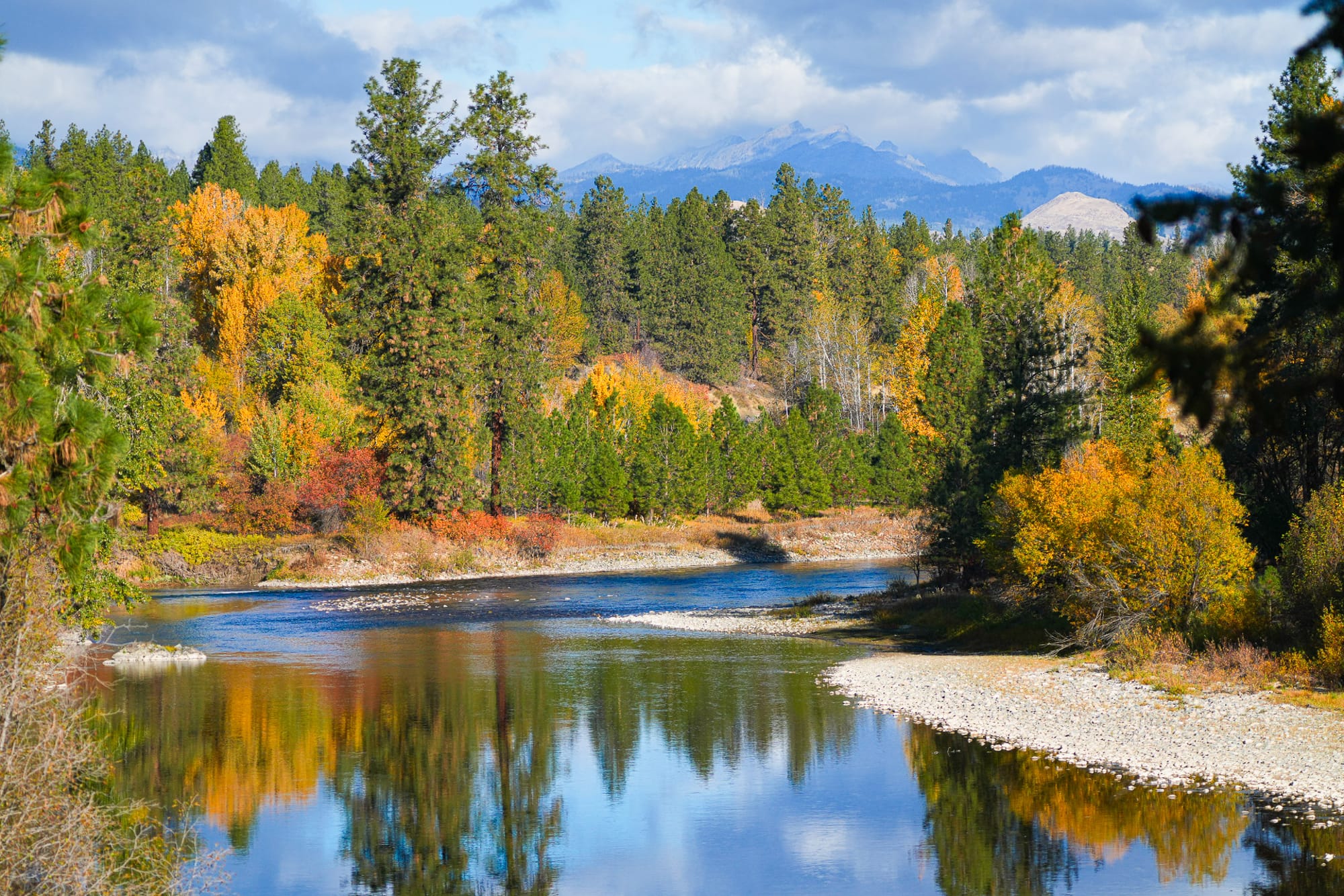
Temperatures continue to drop, and while fresh snow dusts the high peaks, and mornings in the valley start to drop below freezing, the days have been oscillating between being weakly sunny or simply cloudy.
Week in Review
It looks like cottonwoods have finally reached their peak colors, and on a sunny day the deep yellows and oranges of these trees along the river are breathtaking—even a simple drive to town becomes a challenge when there are so many colors to look at!
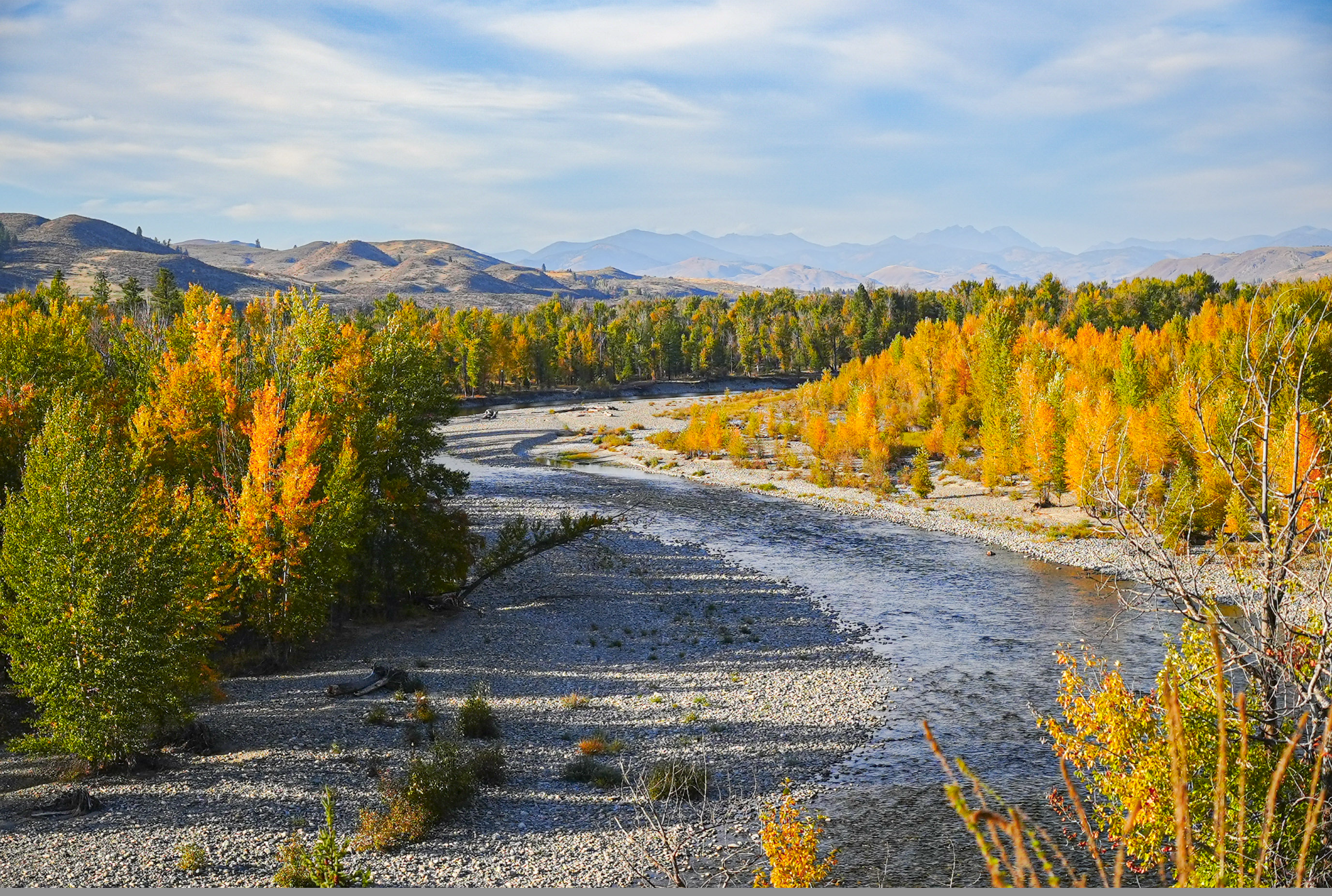
But fall colors haven't been the only visual treats this week. We also had a dusting of fresh snow in the mountains, a dramatic morning of lifting fog, and a dazzling Hunter Moon supermoon.
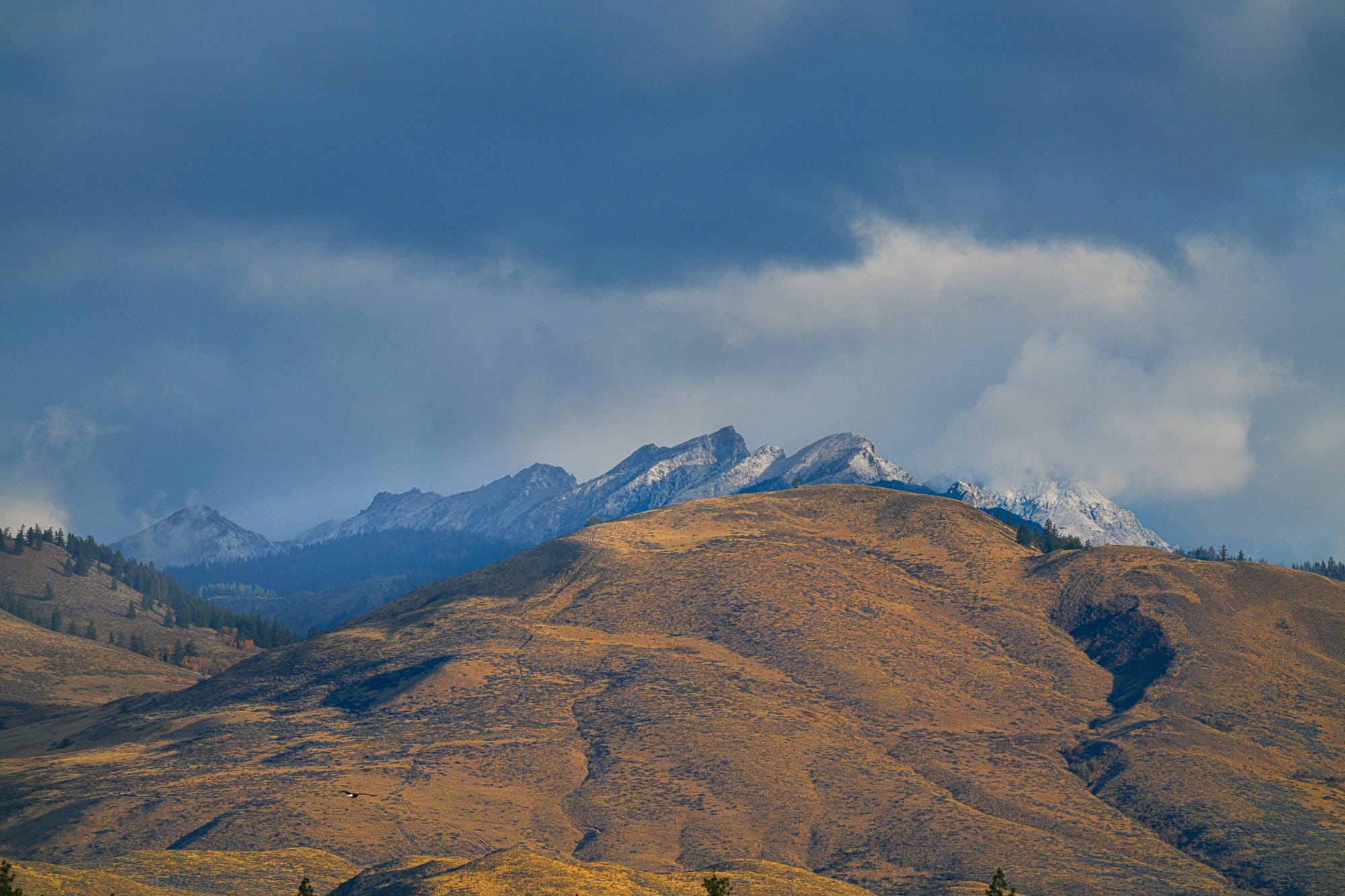
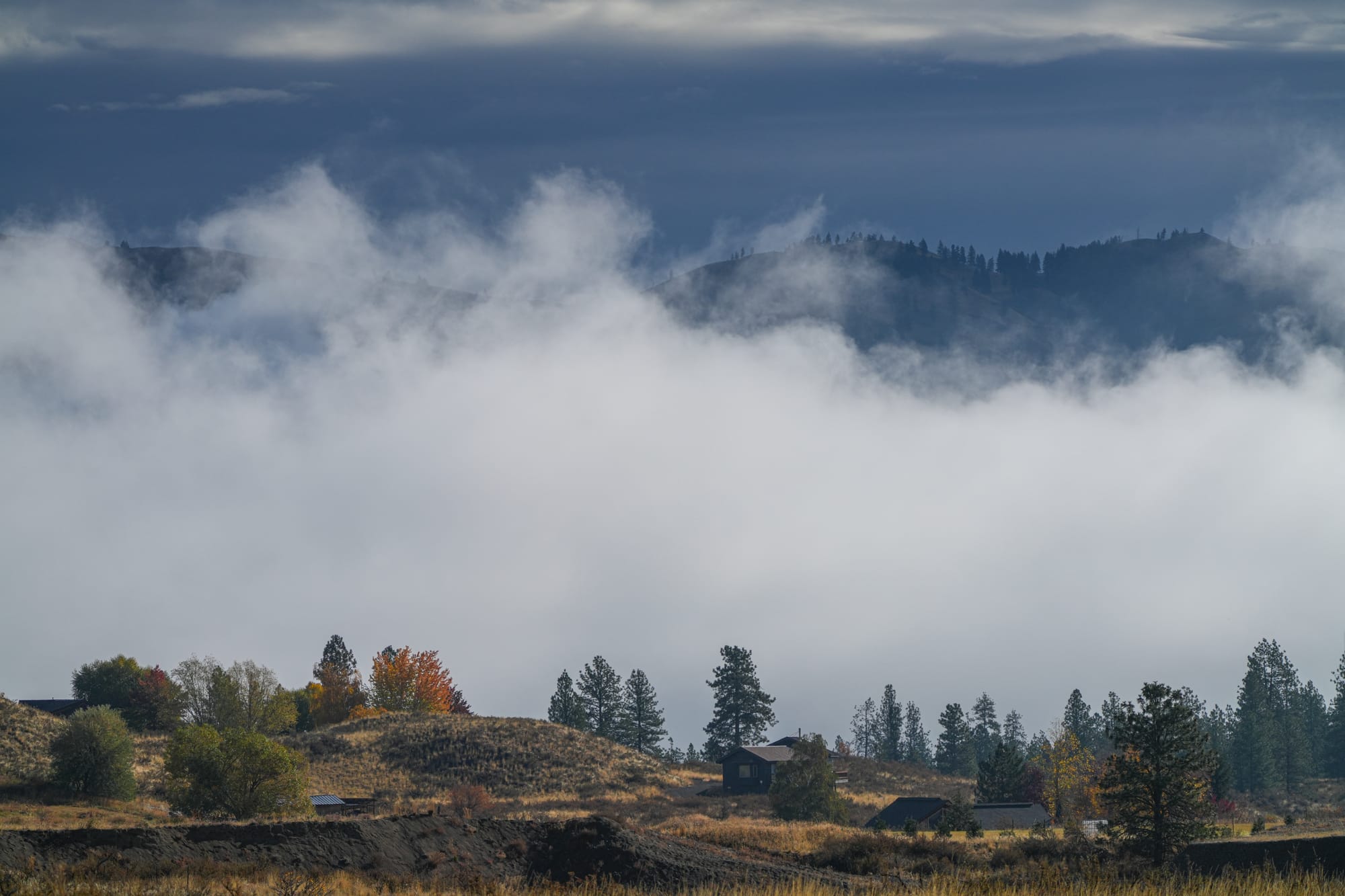
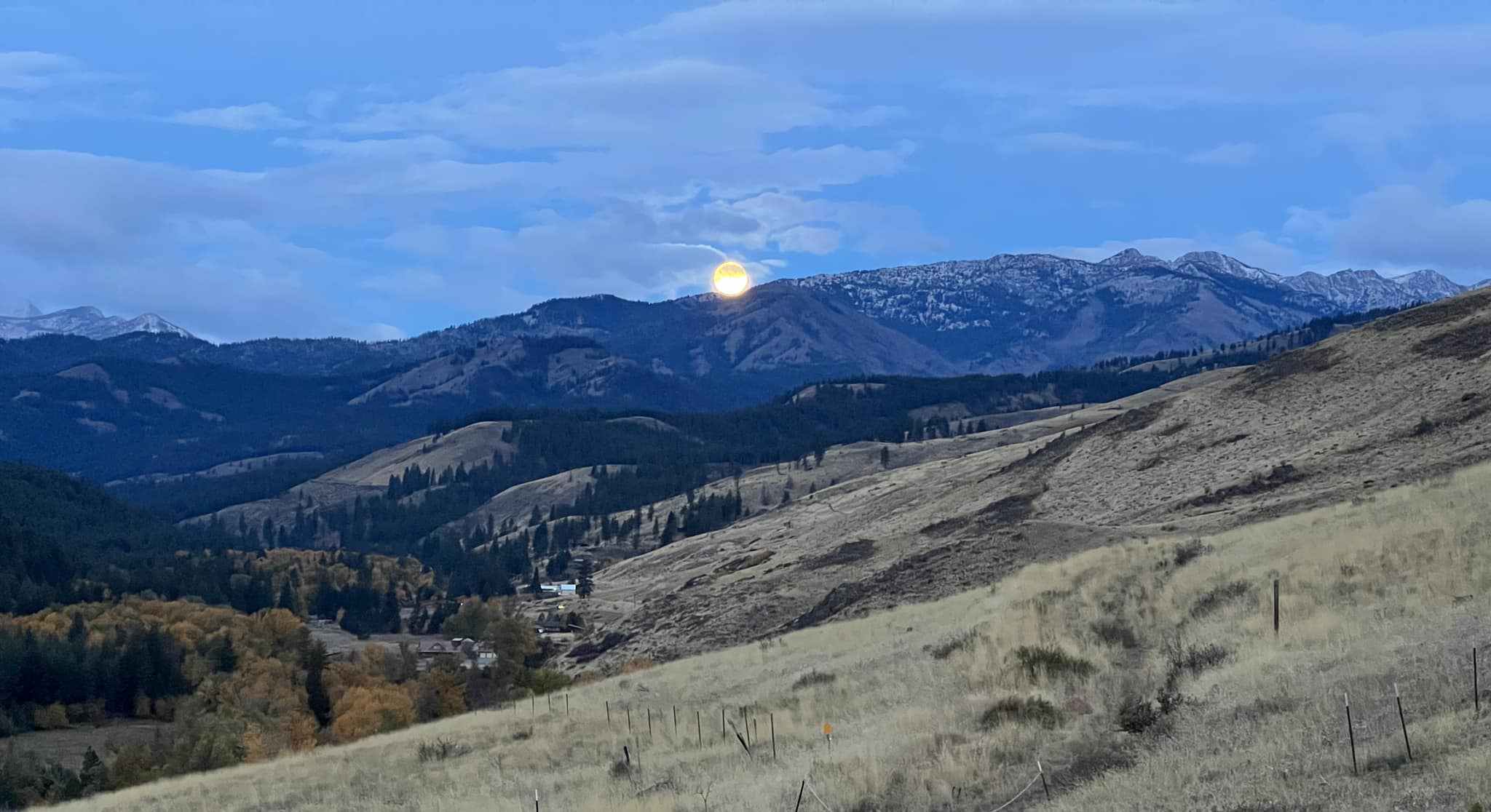
One fun, and unusual, wildlife sighting this week was a long-tailed weasel. These voracious carnivores may linger in one area for a couple days, but they quickly eat all the local prey or scare them into hiding, so weasels are almost constantly on the move, and you'll be lucky to ever see one.
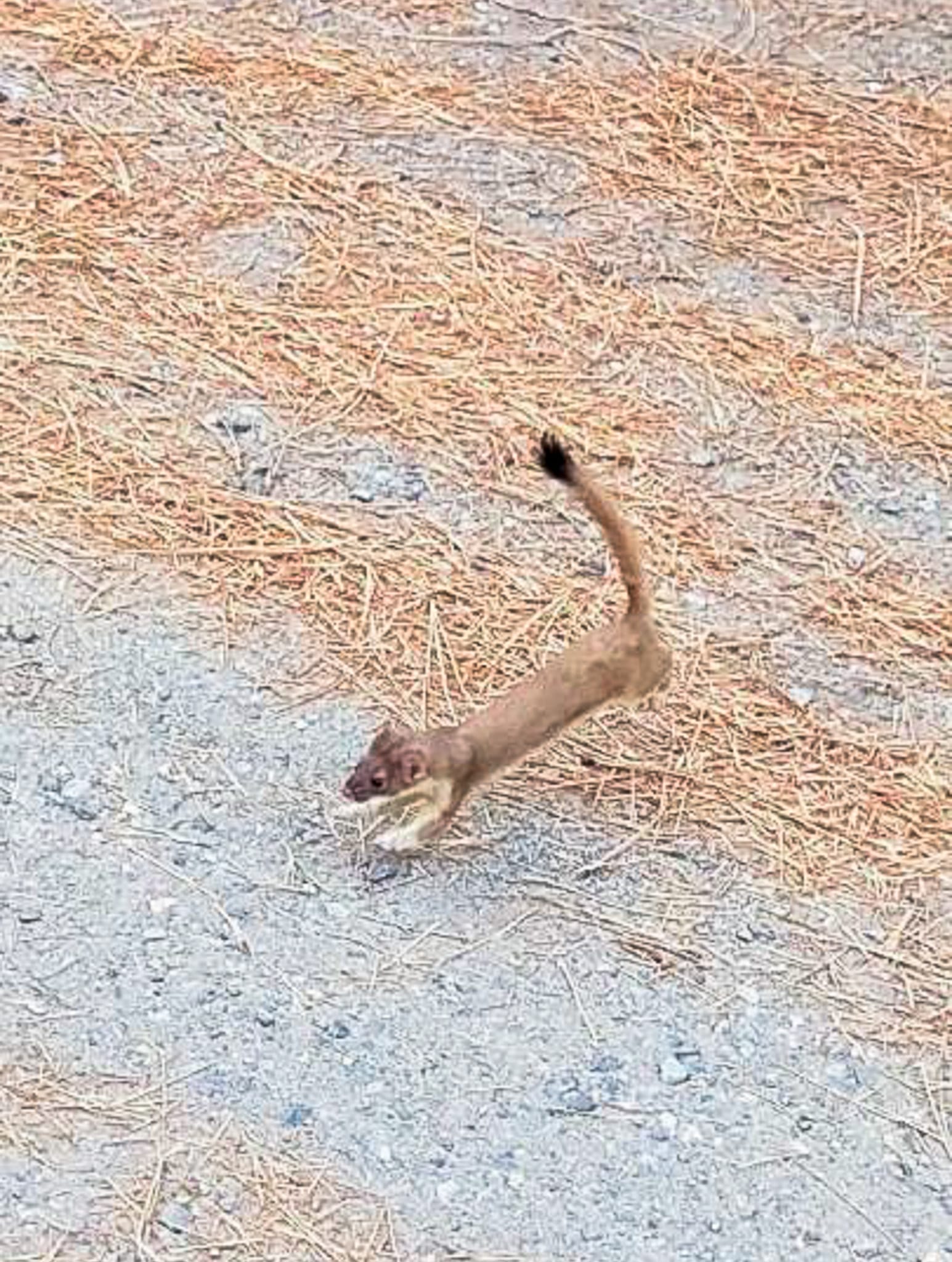
I haven't noticed as many groups of white-crowned sparrows this week, but other birds have been active, including a handful of notable species seen during a stop at Pearrygin Lake.
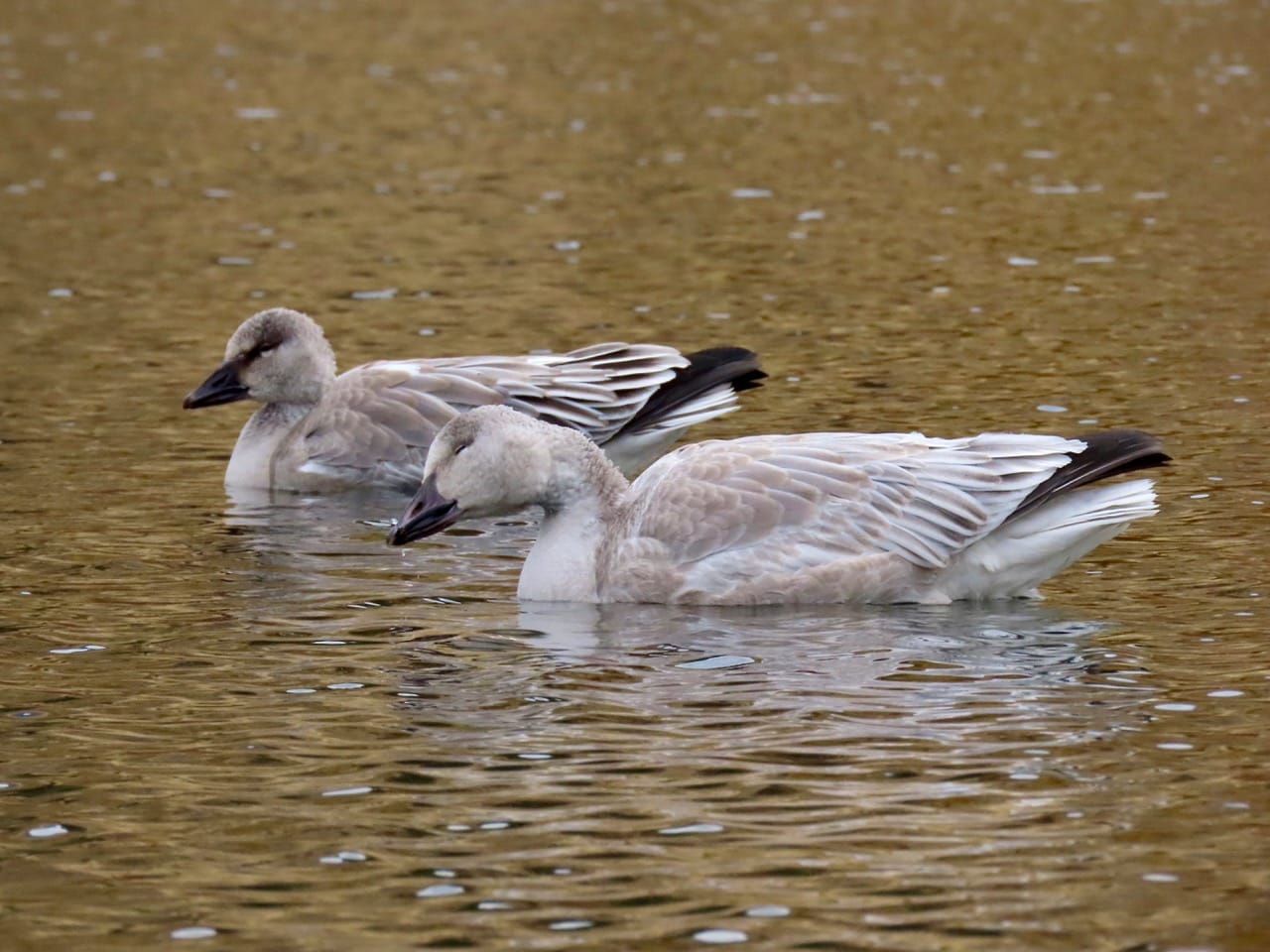
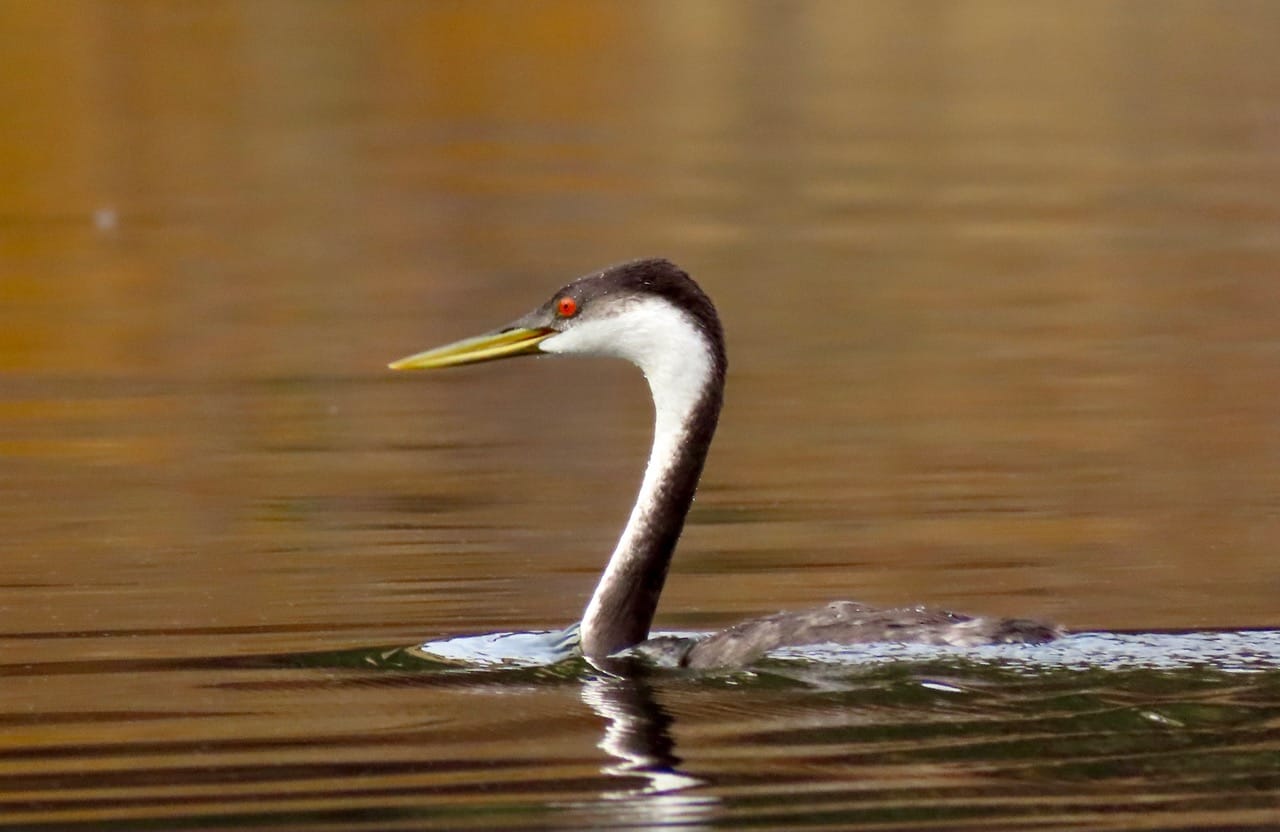
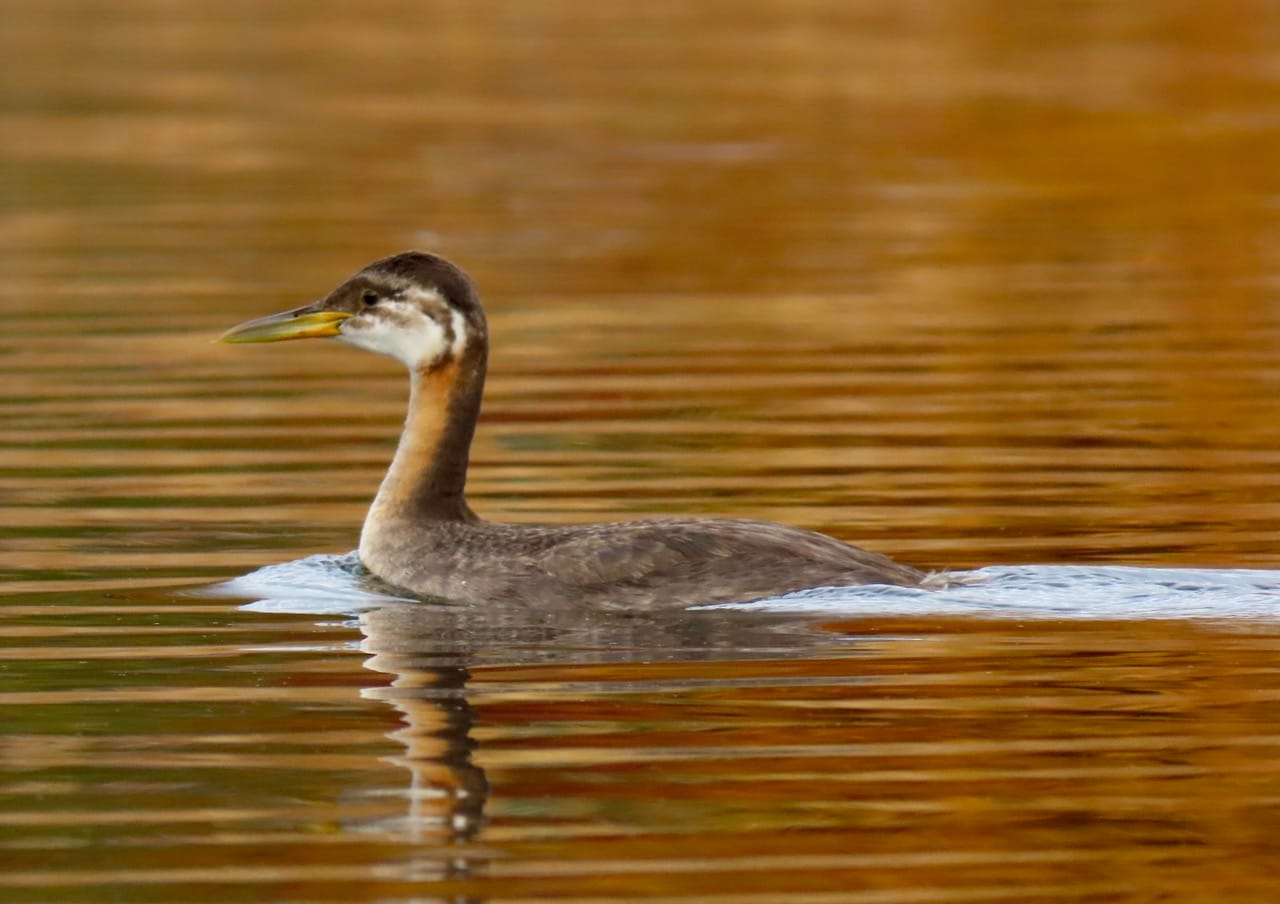
Pileated woodpeckers are widespread but not often seen in the Methow Valley because they have huge territories. These large birds are typically associated with older, undisturbed conifer forests, but they also use stands of big old cottonwoods along rivers. They stick around all year because the insect larvae they find on tree trunks are available even in the middle of winter.
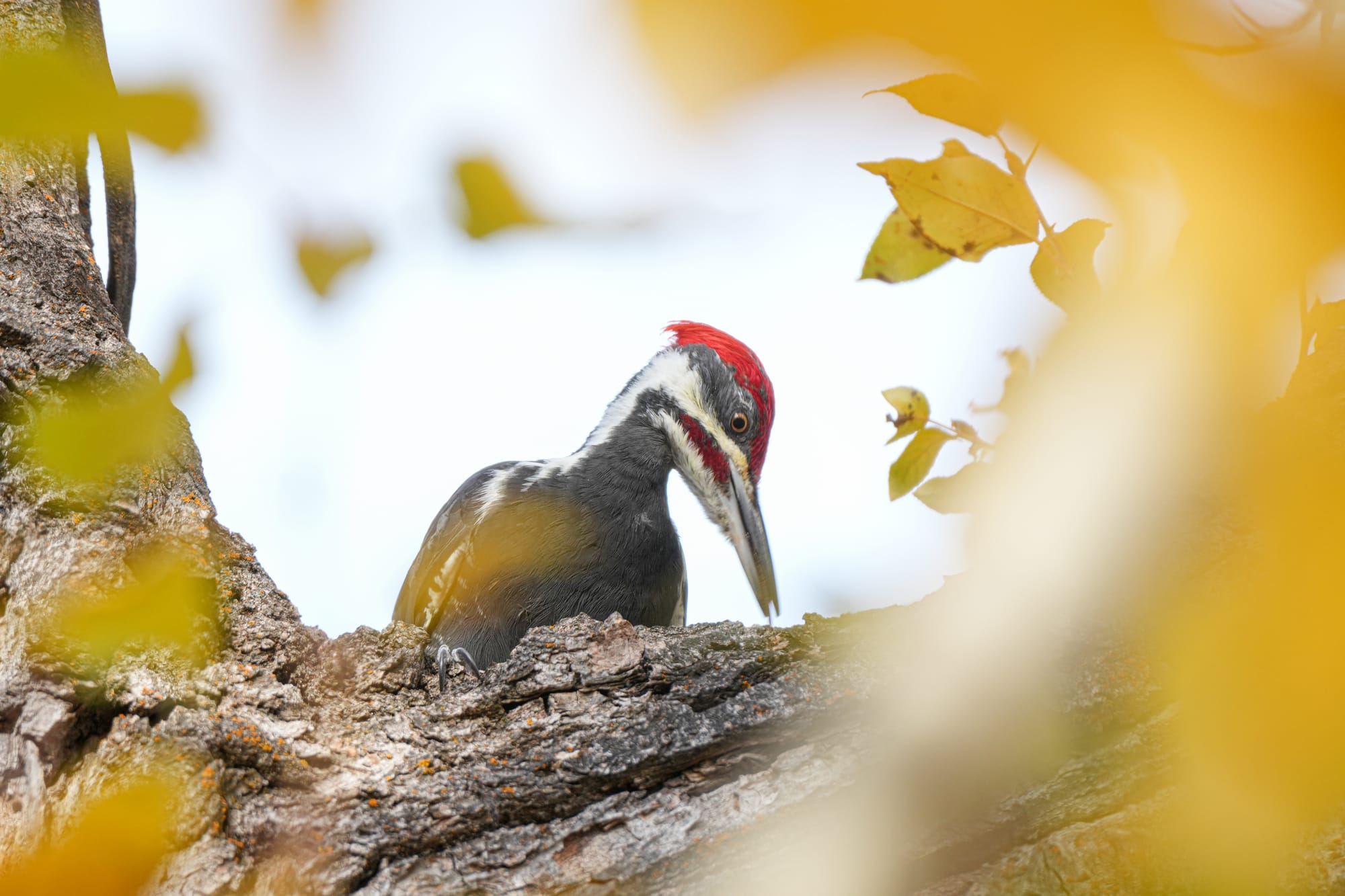
It's definitely the end of the season, but there are still a handful of insects and other invertebrates out and about. One remarkable sighting this week was a scorpion, which are expected in the valley but so rarely encountered that most people don't think about them. Fortunately, our scorpions are not poisonous.
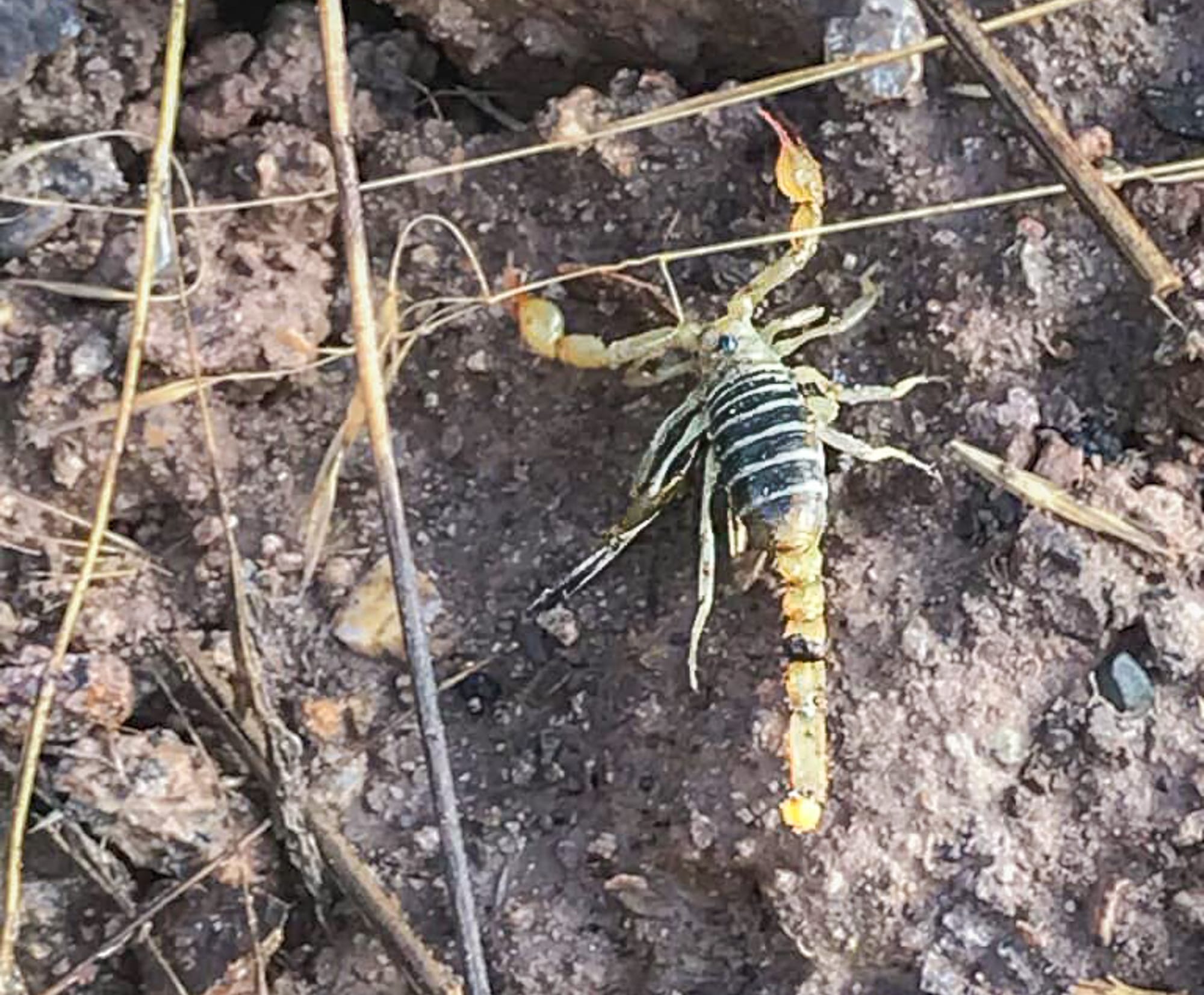
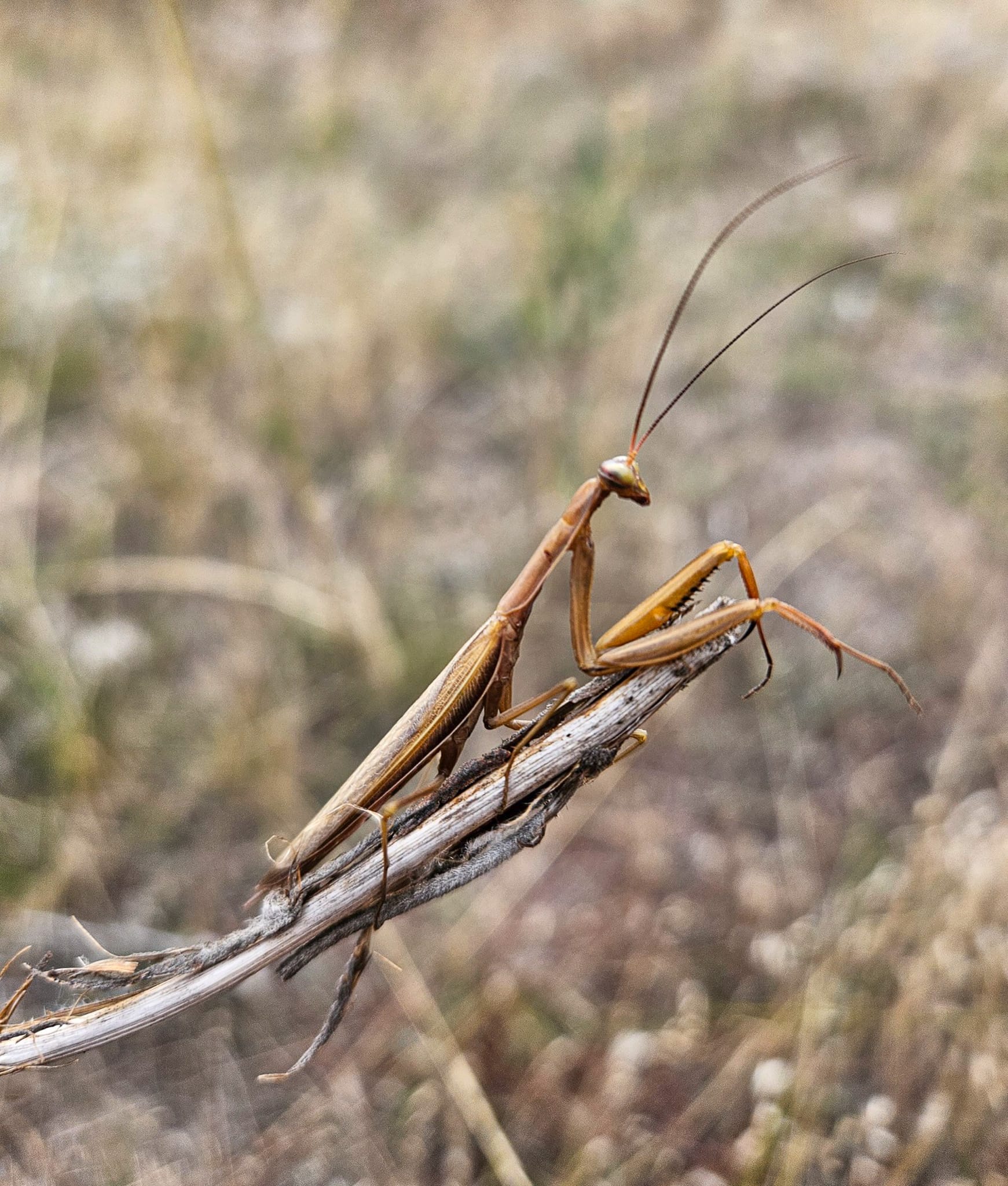
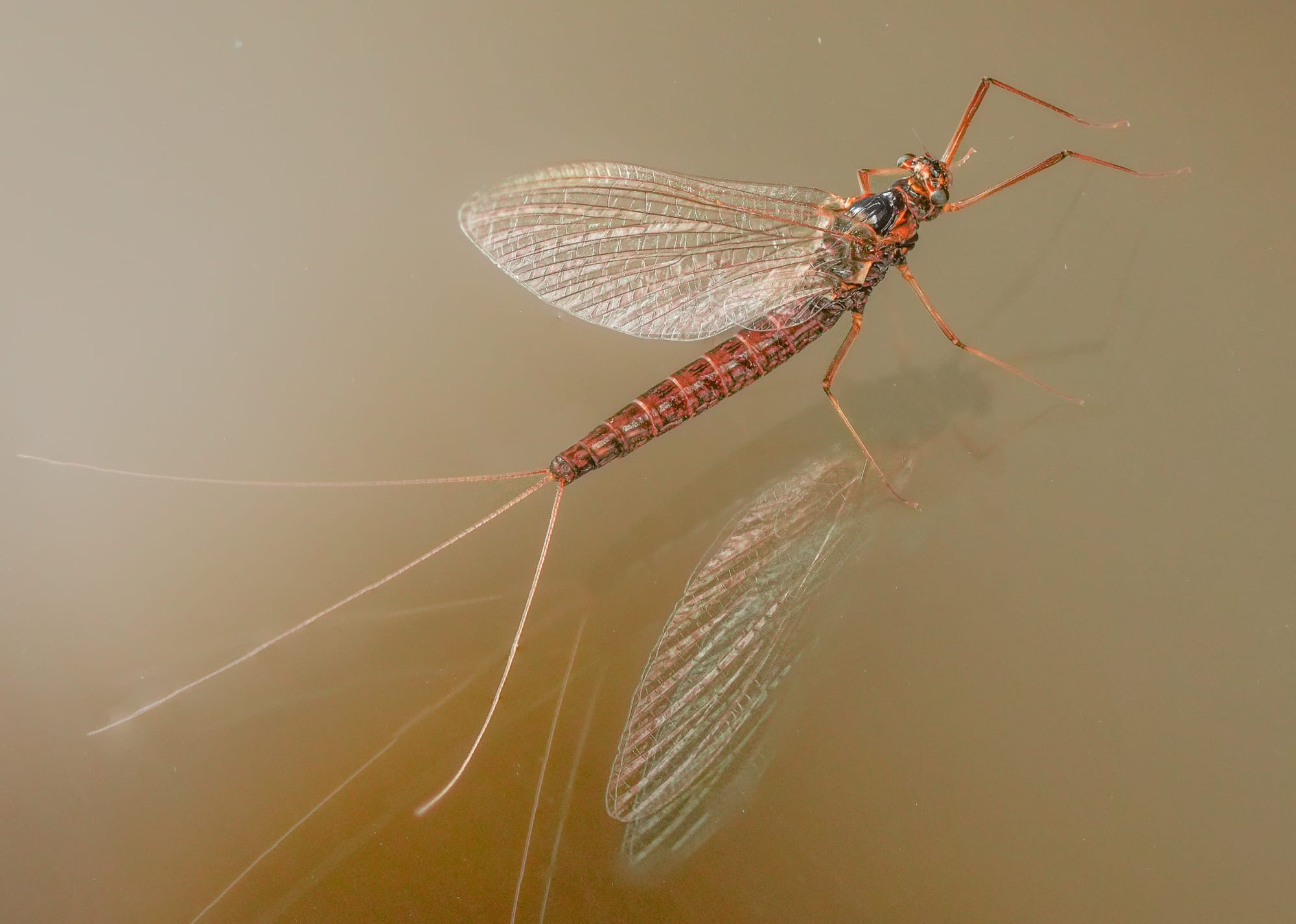
Observation of the Week: Pine Siskins
Pine siskins are small, easily overlooked finches. In fact, I was shocked one summer when I hiked up to a high North Cascades pass and used the Merlin app on my phone to identify the countless, unseen birds calling in the trees around me and discovered that pine siskins were everywhere!
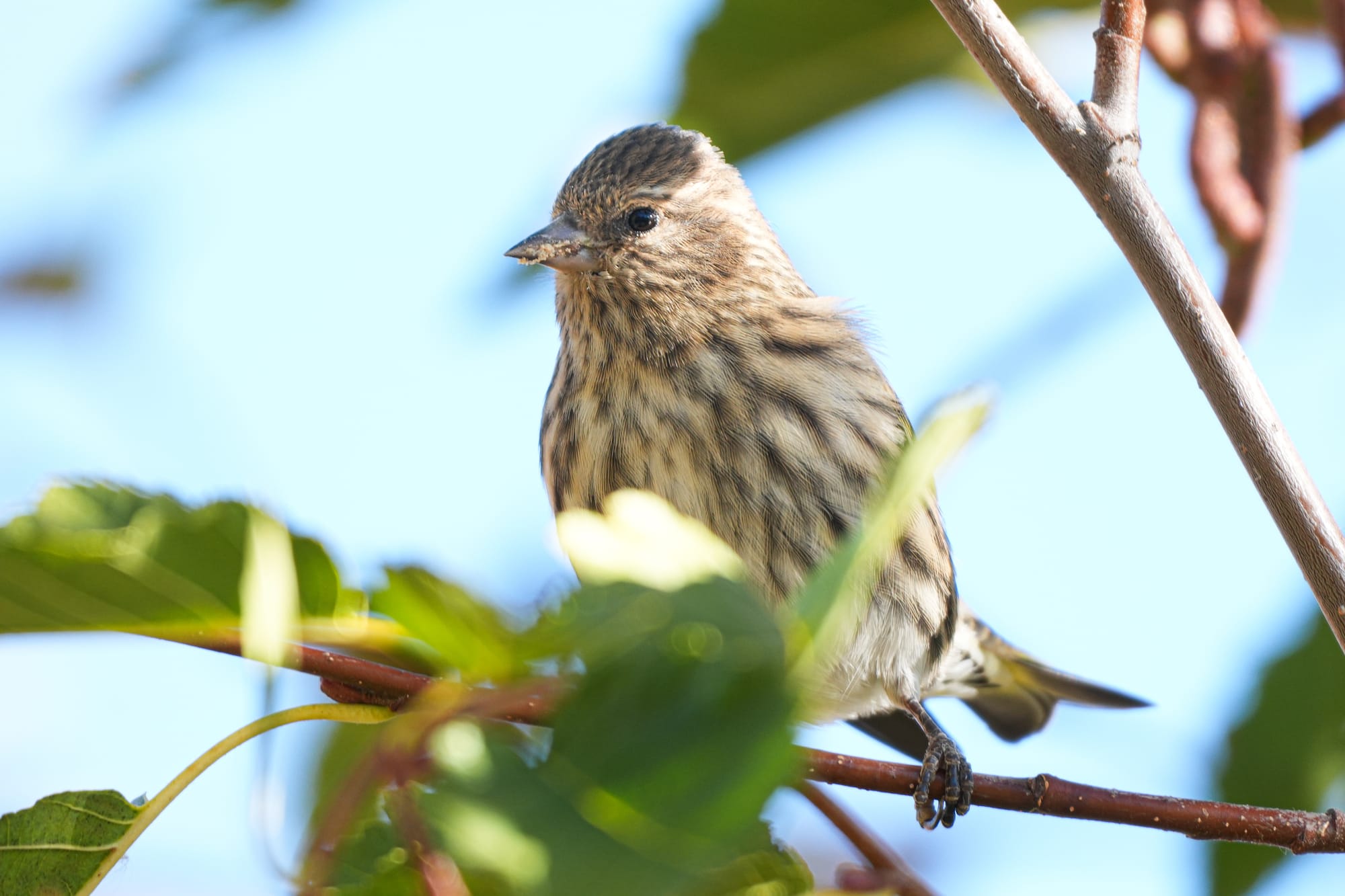
However, after the breeding season, these extremely social finches gather in large flocks and wander far and wide in search of food. These movements are irregular and unpredictable, but if you're in an area where there's a lot of food then you're almost certainly going to run into some of these flocks.
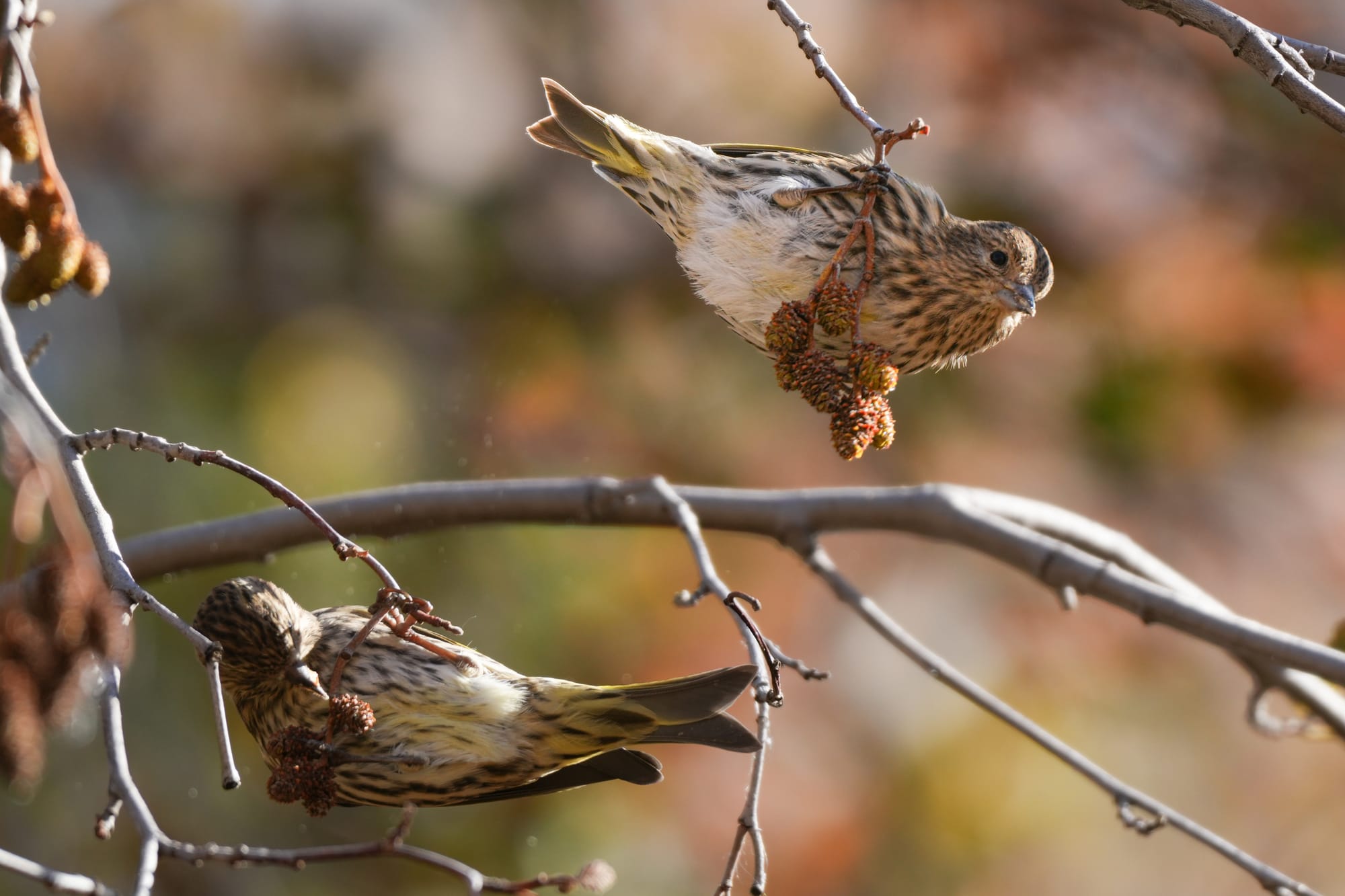
Among their favorite foods are the seeds found in alder cones, and alder cones are ripe right now, so on your next walk you might notice flocks of noisily chattering pine siskins in alder trees along the river.
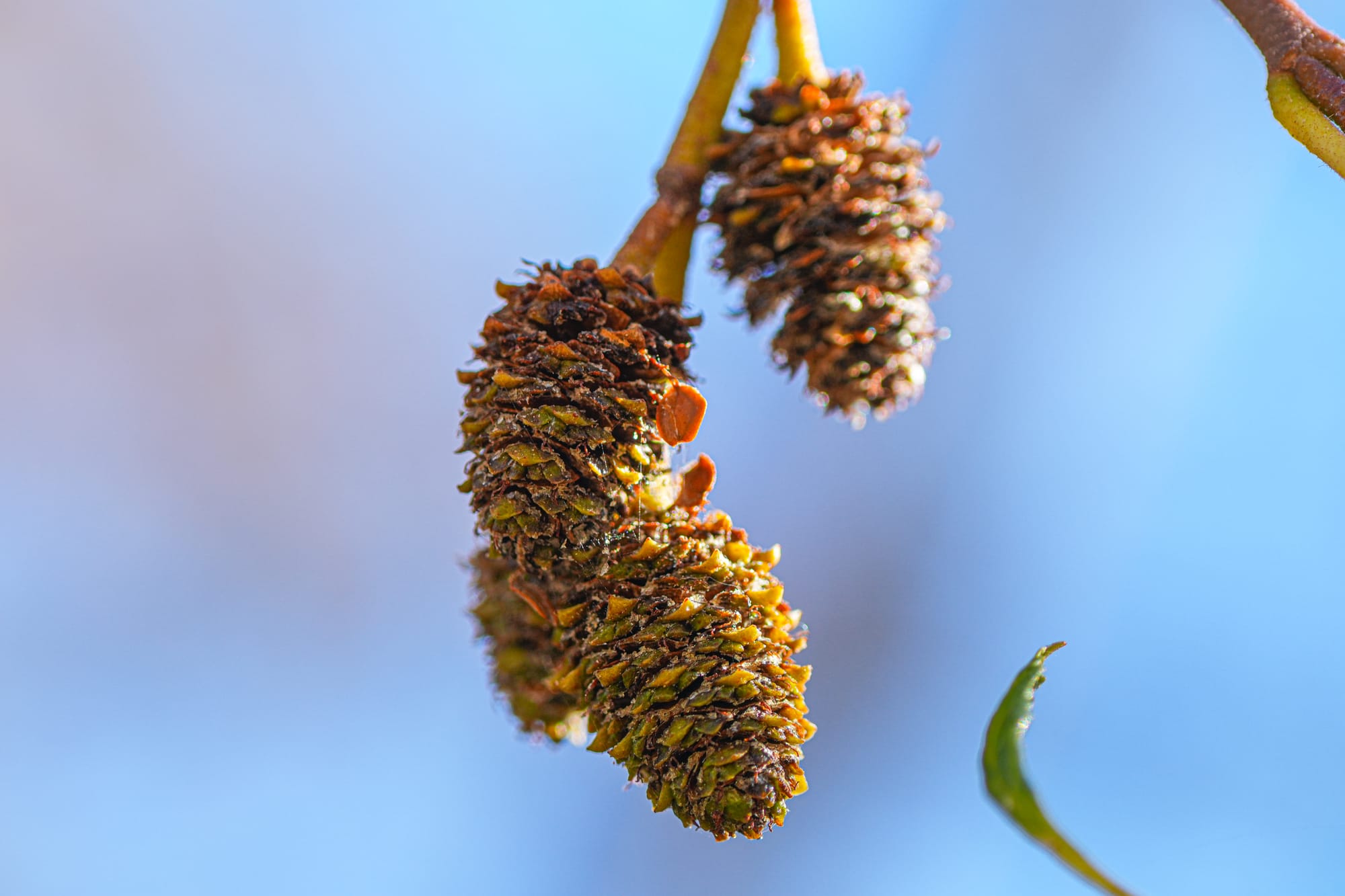
Unlike other finches, which have stout, seed-crunching bills, pine siskins have slender, narrowly pointed bills that are specialized for handling large numbers of small seeds very efficiently. These sharp bills are perfectly designed for quickly extracting tiny seeds from alder cones, and siskins will also eat other tiny seeds like those of grasses, thistles, or composite flowers.
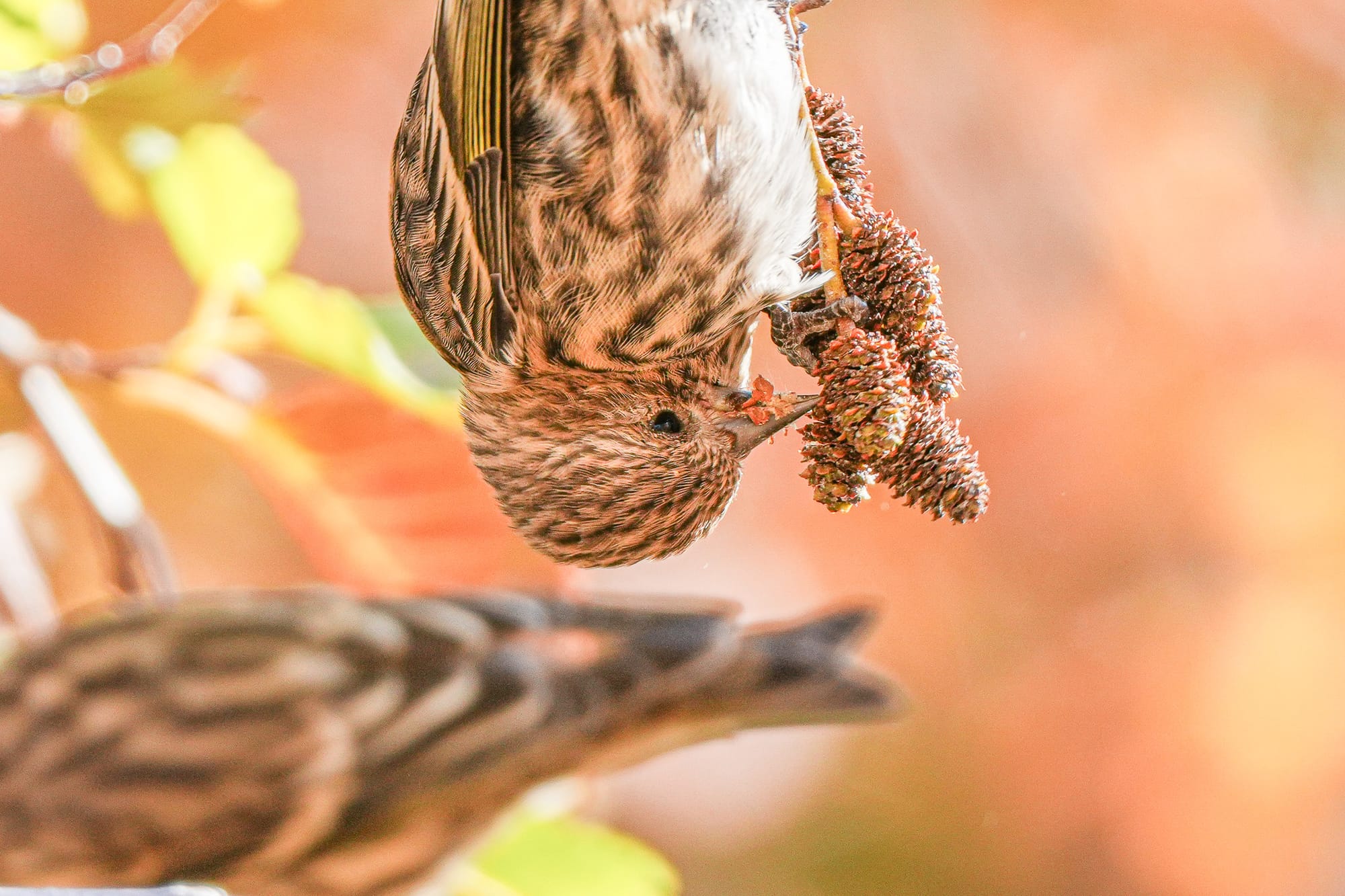
Because they're smaller and lighter than other finches, siskins can cling to small cones or slender stems and gather seeds that heavier finches can't access. Due to their weight and unique bills, pine siskins reign supreme in the small ecological niche they're adapted for.
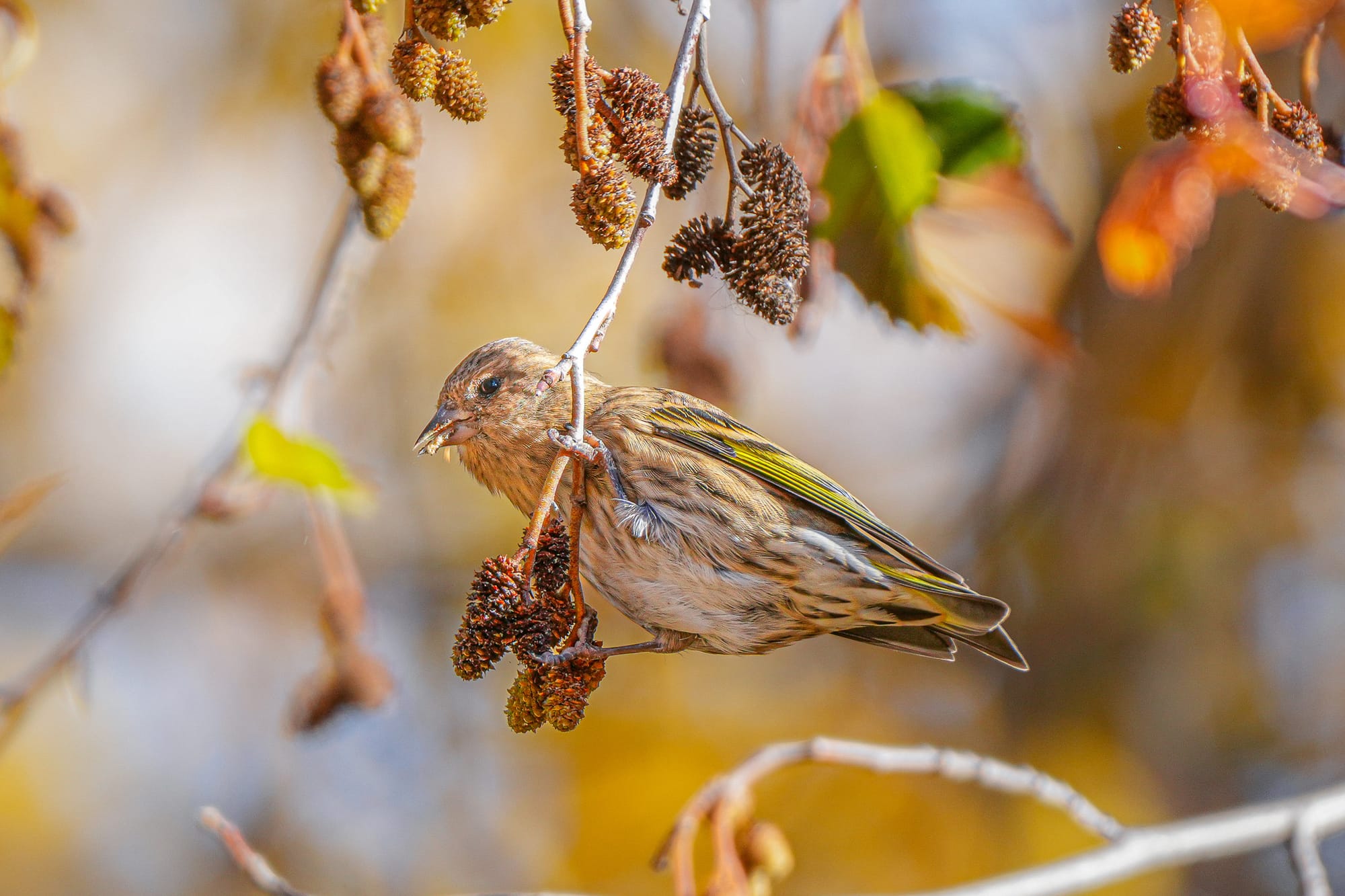
If you offer thistle seed over the winter, flocks of pine siskins will be regular visitors in your yard, and then in the spring, when they disappear. just know that they've headed into the mountains to breed.

